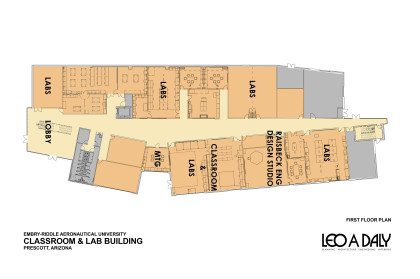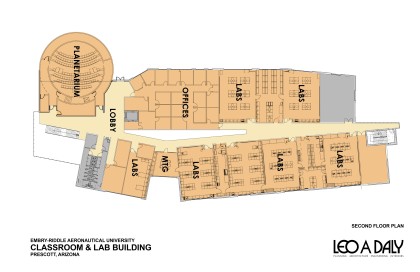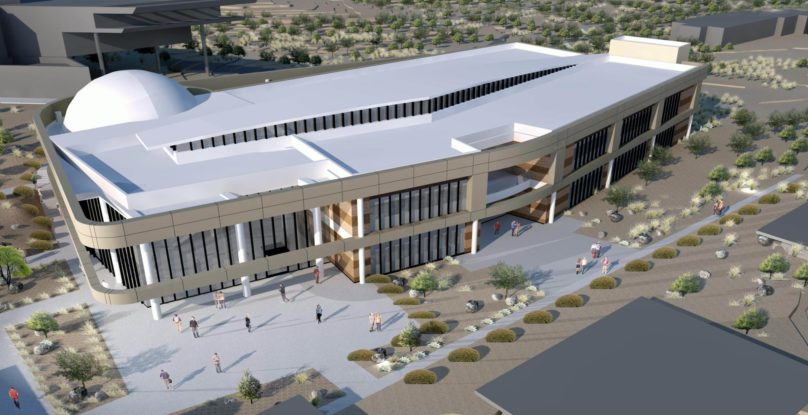As the Prescott Campus in Arizona continues to expand, support is growing for its newest project, the Prescott STEM Education Center, which will include a planetarium.
Supporters of the estimated $17 million facility include Prescott community members, alumni, faculty and staff, and national donors like the Seattle-based Raisbeck Foundation, which has given more than $1 million to name the engineering design studio at the center and endow a professorship (see related article).
“It will become a center for the research and exploration of science and technology for the campus, the community and the region,” says Frank Ayers, chancellor of the Prescott Campus.
The state-of-the-art building is aimed at enhancing science, technology, engineering and mathematics (STEM) education at the university and in the community. A robotics lab, multidisciplinary design studio, forensic biology lab, wildlife science lab, 3-D printing lab and energy lab are planned, along with chemistry, optics, research, design, mechanical engineering and general physics labs. Construction of the STEM Education Center, which is slated to be more than 50,000 square feet, is expected to start this year.

The center will also play a vital role in expanding, promoting and enhancing STEM education throughout the community, says Ayers. Its multimedia immersive learning center and planetarium will be open to the public and designed for frequent community use. Area high school and middle school students will be able to visit and explore STEM careers. The learning center and planetarium will augment the Prescott Campus’ existing observatory complex, which was recently rated by CollegeRank.net as No. 8 among the top 35 university observatories nationwide.
Building Community
Local real estate developers Jim and Linda Lee have also contributed to the construction of the STEM Education Center. A wall of honor will be erected inside the building and will display their names, as well as the names of all other major donors.

“The future of the Embry-Riddle Prescott Campus can’t be separated from the future of Prescott,” says Jim Lee, who sits on a steering committee for campus buildings. ”We are very fortunate and pleased to have Embry-Riddle in our community.”
Another supporter of the center, Mark LaPole (’84, PC), says he favors the project because it unites all of the STEM education activities under one roof. Previously, these were scattered across the campus. “I also appreciate the outreach goals of the STEM center,” says LaPole, whose donation to the project will be matched by his employer, Ball Aerospace. “Opening up the campus for more community and industry involvement will improve the university’s profile and strongly enhance the quality and diversity of the student body.”
Archie M. Dickey, dean of the Prescott Campus’ College of Arts and Sciences, says the STEM Education Center’s new biology, chemistry and physics labs will allow the campus to expand the majors it offers to include premedical, preveterinary, forensic biology and wildlife science.
The Prescott Campus faculty and staff are also excited about the project. In all, nearly $2 million has been raised.
According to LaPole, all of this support for the STEM Education Center and planetarium is having a noticeable effect on campus spirit. “There is a powerful energy on the campus. Smart, optimistic and the sky-is-not-the-limit thinking is everywhere.”
